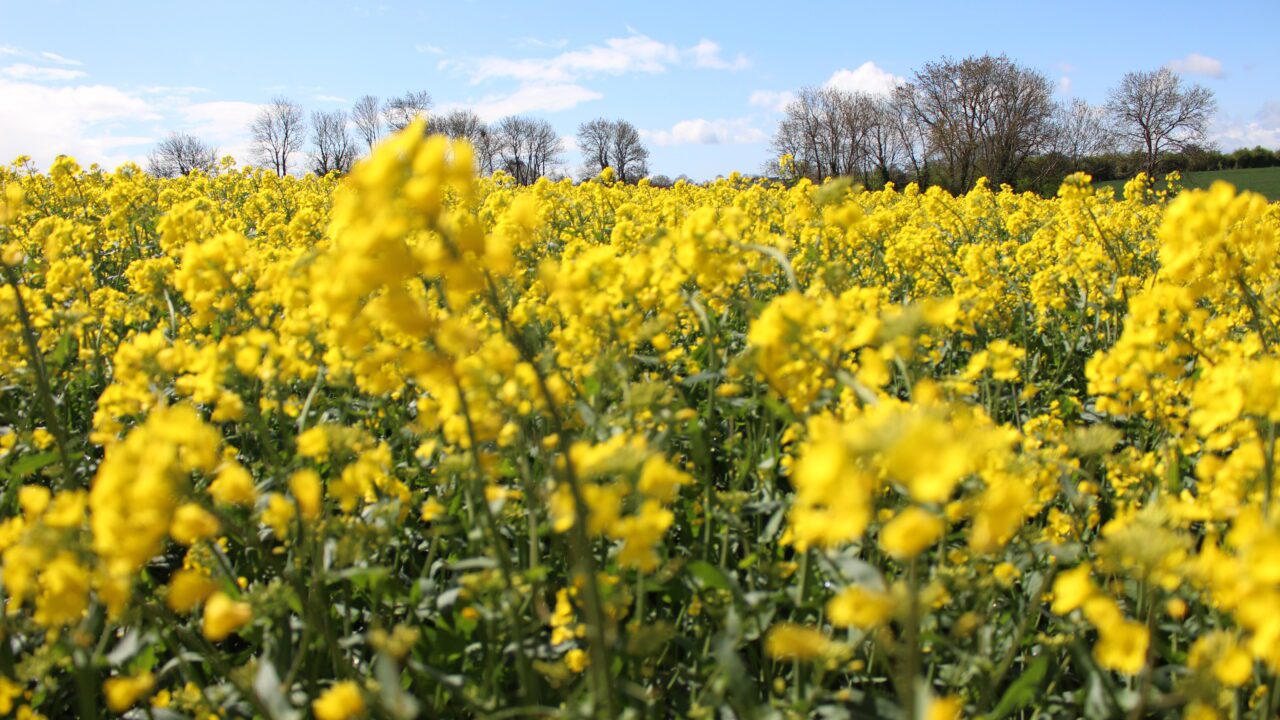Many winter oilseed rape (WOSR) crops had relatively good canopies before Christmas, according to the latest information from Teagasc.
But many of these are now smaller and have a lower green area index (GAI). This is due to either the plant growth regulator (PGR) effect, pigeon grazing, or both.
All efforts to stop pigeons grazing in the coming weeks need to be deployed or the canopy will be grazed further.
Pigeon grazing and canopies
The effect of pigeon grazing will determine how much nitrogen (N) is needed for the crop in the coming weeks.
N is stored in the leaves of oilseed rape and when pigeons graze it, they are taking away this element, which is vitally important in 2023 – given the price of fertiliser.
The size of the canopy can be measured by using the GAI app on a iPhone.
On Android smartphones, it’s a case of using the BASF GAI website. Where crops have a GAI of 1.0, this equates to the equivalent of 50kg/ha of N already in the crop. This is worth approximately €150/ha at the current N price.
Growers should assess canopy size over the coming weeks before deciding on a fertiliser regime. Total fertiliser N requirement can be matched to the GAI index value calculated now.
The following values are relevant. A crop GAI value of 2 equates to a fertiliser N requirement of 130kg/ha; a value of 1.5 works out at a total N application rate of 190kg. The respective N requirements for crops with GAI values of 1.0 or less than 1.0 are 210kg and 225kg.
A typical N spreading plan for crops with a GAI value of 1.0 follows: Late February, apply 50kg/ha; mid-March, apply 100kg; and early April (seed fill), apply 60kg, according to Teagasc tillage experts.
Sulphur for oilseed rape
Sulphur is often forgotten when fertilising oilseed rape crops, even though they have a relatively high requirement of 30-35kg/ha. Growers should use N fertilisers that have a relatively high level of sulphur (S), e.g., ASN (if available). S should be in the first two splits if possible.
Only a few WOSR crops received a fungicide before winter, so it is highly likely that light leaf spot is present in most crops.
Growers should take samples of leaves and put them in a plastic bag and then put the bag in a warm room (e.g., a hot press) for 24-48 hours. They should then see the tell-tale signs of little white salt-like lesions on the leaves.
If light leaf spot lesions are notices, growers use a fungicide containing prothioconazole (e.g., Proline), metconazole (Sirena) or tebuconazole (Fezan) for control.
Prothioconazole-based products will not have a growth regulator effect, whereas the other two actives will have some level of effect.
